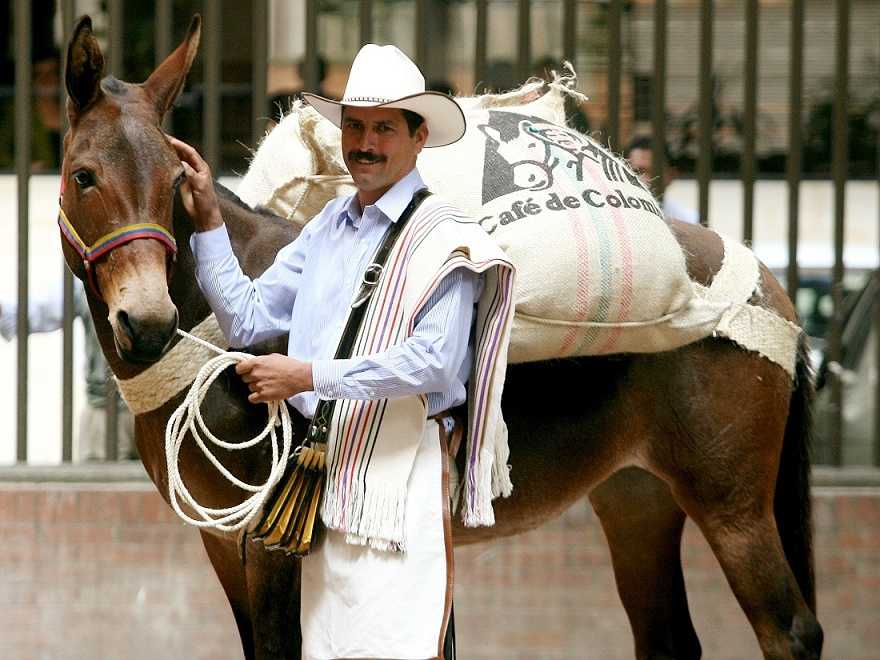Colombian coffee production will increase to 12.5 million bags GBE in MY 2014/15 (October through September), up from 12.1 million bags GBE the year before, according to the latest Gain Report issued by USDA Foreign Agricultural Service. Production is forecast to increase further in MY 2015/16 to 12.7 million bags GBE.
This incremental 2% increase in MY 2015/2016 reflects a projected slowdown in the production recovery and a peaking of the replanting program. Since 2013, weather patterns have returned to more normal conditions.
Even though the projected drought conditions last year from the El Niño weather phenomena did not materialize, coffee farmers and GOC weather officials remain cautious and continue to monitor for weather pattern shifts.
Production has returned to the desirable historical levels, between 12 and 13 million bags GBE, returning to levels comparable to the peak 2008 growing year where Colombia produced 12.5 million bags GBE.
Despite favorable weather conditions supporting the production recovery, a shortage of agricultural labor and a higher minimum wage have increased production costs. Less farmworkers in the field detrimentally impacts production and control of insect pests, such as the coffee cherry borer.
Farmworker labor to conduct field observation and clearing the soil of fallen cherries are critical to managing borer outbreaks.
Borer infestation levels are less than 5% of planted area but indications are that farm infestations are reaching 10% in the central and Antioquia region of the Colombia. The borer detrimentally impacts the coffee quality resulting in price discounts at points of sale.
The coffee rust resistant variety replanting program has reached close to 50% of the total area planted in Colombia. The National Federation of Coffee Growers of Colombia (FEDECAFE) estimates that average coffee productivity has increased to 15 bags per hectare from 10 bags per hectare five years ago.
This is a direct result of the replanting program and a reduction in the average age of coffee trees from 15 to 7 years.
The rust resistant variety replanting program and a return to more normal weather conditions have helped maintain strong productivity during the first 7 months of MY 2014/15, up 5% from the same time period a year before.
The PIC subsidy payment program established in March 2013 has been suspended since August 2014 due to the domestic prices being above the PIC subsidy trigger price, set at about USD 285 per 125 kilogram bag.
Domestic prices are managed by FEDECAFE and based on the daily quote of the New York Coffee, Sugar and Cocoa Exchange (NYCSCE) less estimated costs for internal transport and administration.
Current prices are below the previously established PIC trigger price and coffee farmers are demanding a reactivation of the program with threats of a nationwide protest in late May 2015 if their demands are not met.
In MY 2014/15, Post estimates that exports will reach 11.9 million bags GBE paralleling the increase in production. Exports are forecast to remain unchanged at 11.9 million bags GBE for MY 2015/16.
The report estimates a marginal increase coffee consumption, up 100,000 bags GBE in MY 2014/15, remaining static for MY 2015/16. Consumption remains small at 1.4 million bags GBE. Local coffee consumption is driven by an increasing number of Juan Valdez coffee shops or cafes owned by a private consortium associated with FEDECAFE.
The Juan Valdez cafes offer a variety of coffee and espresso drinks. Other companies with a presence in this market include Illy and OMA.
The mega-coffee retailer Starbucks started operations in Colombia in 2014. The expectation is that Starbucks will stimulate competition and perhaps increase overall consumption.
Coffee shops in Colombia are primarily oriented towards satisfying the coffee beverage preferences of young professionals. Although processed and consumer-oriented high quality coffee sales have increased in recent years, the Colombian consumption of green coffee remains marginal.
In MY 2014/15 Post expects Colombian coffee exports will increase to 10.9 million bags GBE, up 8 percent from the previous year. Colombian coffee exports have been expanding significantly since 2013, paralleling the recovery in coffee production.
As of March 2015, exports increased 2 percent from the previous year, according to FEDECAFE. Post forecasts Colombian coffee exports will remain at 11.9 million bags GBE in MY 2015/16.
The United States is the major single destination for Colombian coffee, importing 43 percent of all Colombian coffee exports, with Japan, Germany, Belgium, and Canada importing 9, 8, 7, and 7 percent, respectively.
As part of a quality differentiation and improvement policy, Colombia is increasingly exporting high quality coffee that meets the cupping and grading expectations for certifications to capture more value added.
Value added, specialty coffee now comprises close to 40 percent of Colombia’s total coffee exports. Colombian specialty coffee is booming with certified and organic coffees receiving significant price premiums, typically higher than traditional coffee exports.
Coffee denomination of origin labels from specific regions of Colombia, such as Huila and Nariño, and coffee from women farmers are being pushed by the GOC as a strategy for more international recognition and further value added. Colombian specialty coffee growers produce coffee under numerous international programs that provide fair trade and organic certifications such as USDA Organic, UTZ Certified, 4C, and Rainforest Alliance.
Protocols vary between growers to maintain the levels of quality that will meet certification standards and continue to be recognized by international buyers. Colombian coffee growers understand that coffee certifications and recognition of coffee differentiation by regions due to best practices represent a premium value for the coffee.
The coffee sector has historically played a large role in Colombia’s economic success, providing a livelihood for an estimated 500,000 producers and their families, providing FEDECAFE with significant political influence.
A majority of growers are members of FEDECAFE and take advantage of the organization’s educational programs, technical training, and sales support. FEDECAFE purchases coffee from its members at an internal price which parallels the international commodity market less some administrative and internal transport expenses.
The PIC subsidy program that began on March 18, 2013, was cancelled for the latter half of 2014 as a result of prices above the PIC trigger price of COP 700,000 (USD 280). In 2015, the PIC program remained suspended as prices at the beginning of the year were above the PIC trigger price.
Nevertheless, since March 2015, prices have fallen below the PIC trigger price resulting in demands by coffee growers to reactivate the subsidy program with threats to protest in late May.
Other GOC and FEDECAFE programs to assist growers have focused on controlling coffee rust, which successfully restored coffee production to an average of 12 million bags GBE. FEDECAFE manages low interest loan programs for the costs of replanting; however, loans are allegedly only offered for planting the rust resistant Castillo variety.
Although Castillo variety has been effective to control the coffee rust, there is some discontent with growers that would like access to loans to plant other varieties, given issues with the Castillo yields and cupping quality. The GOC also offers financial assistance for all agricultural commodities through the Rural Funding Incentive which provides loans with discounted payback terms.
















